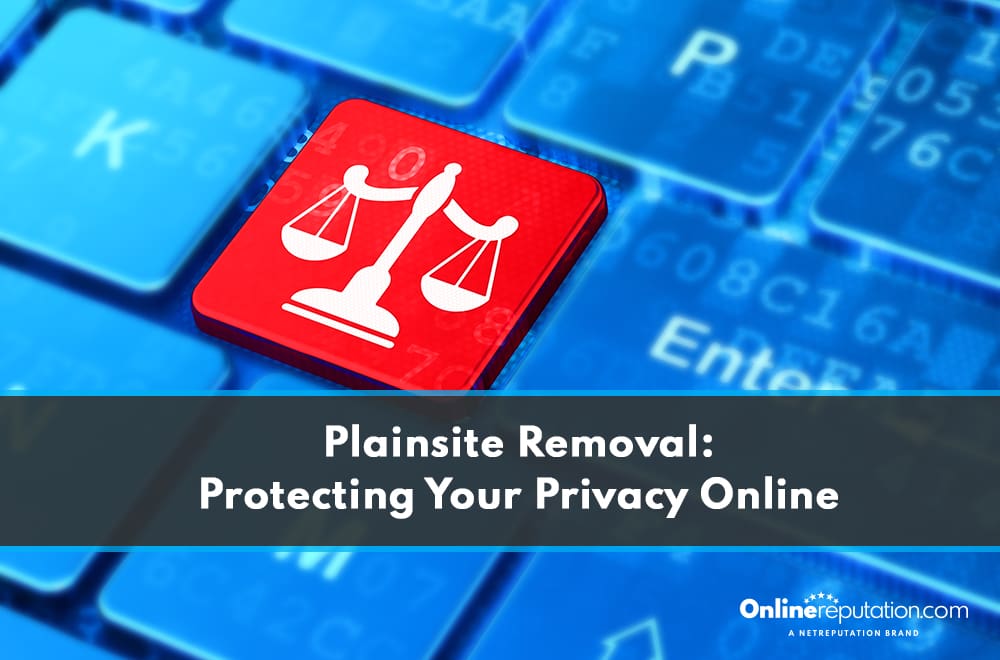
Protecting your privacy online has never been more important. One way to safeguard your personal information is by removing old court records from PlainSite. Plus, when you take steps to protect a person’s privacy interests, it helps prevent cybercrimes like identity theft and phishing.
In addition to hiding old court records from Google search results, making your public documents less accessible online can also protect your digital reputation.
It’s also useful to be mindful of what you share online, always use strong passwords, and regularly monitor your digital presence.
Are there old court records harming your reputation? It’s possible to influence Google search results in your favor. Call us at 844-230-3803 for more information.
PlainSite Court Records Removal
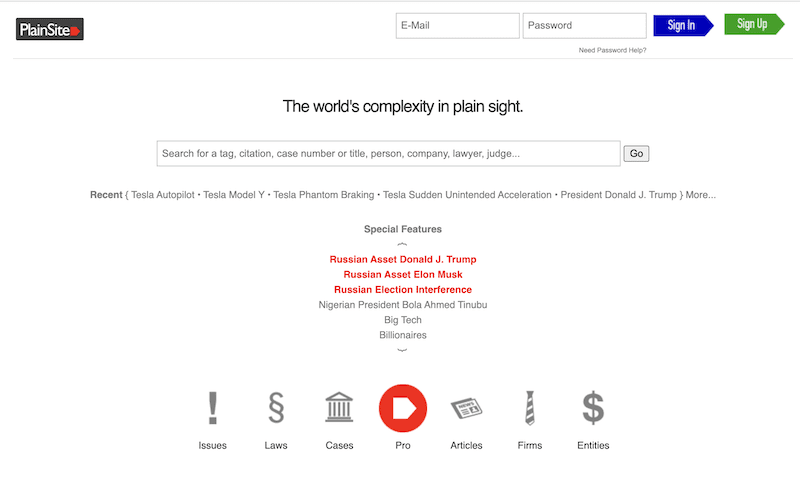
PlainSite removal refers to the process of eliminating or hiding court records and other public information accessible through the website.
Protecting personal data has become increasingly crucial in today’s digital age, where online information is readily available and susceptible to misuse. PlainSite court records removal plays a vital role in safeguarding individuals’ privacy by allowing them to control the accessibility of their legal history and sensitive details.
By opting for PlainSite removal, individuals can prevent their personal information from being exploited by malicious entities or the general public. This proactive measure not only ensures data security but also maintains a level of confidentiality that is essential in various aspects of one’s life.
Reasons To Remove PlainSite Court Records

Removing your information from PlainSite is crucial for safeguarding your online reputation, whether it’s for personal or professional reasons.
Having a strong online reputation is vital in today’s digital age, as it impacts how others perceive you, both in your personal and professional life.
When information and court records on PlainSite go unchecked, it can tarnish your reputation and credibility. This is where online reputation management plays a critical role, as it involves monitoring and controlling the information available about you online.
We work with clients to suppress court records. We’ll also process removal requests for court records on PlainSite and similar sites. Give us a call at 844-230-3803 to learn more.
Publicly Available Personal Information Protection

Protecting your personal information is paramount in the digital world to prevent potential misuse or exposure, especially in Google search results.
Privacy protection measures, such as search engine suppression or removing PlainSite court records, play a crucial role in maintaining control over one’s online presence. Strategies such as regularly updating privacy settings, using strong and unique passwords, and enabling two-factor authentication can fortify the security of personal data, too.
Data security breaches can lead to devastating consequences, ranging from identity theft to financial fraud. By being mindful of the information shared online and limiting exposure, individuals can minimize the risk of falling victim to cybercrimes.
Avoid Identity Theft

Avoiding identity theft is a crucial reason to remove court records and other public information that could be exploited by individuals or legal entities.
Identity theft is a serious threat in today’s digital age, as cybercriminals can easily access personal details and sensitive information published in public sources. When court records and other types of sensitive information are readily available, malicious parties can misuse this data for fraudulent activities without your knowledge.
Online Reputation Maintenance
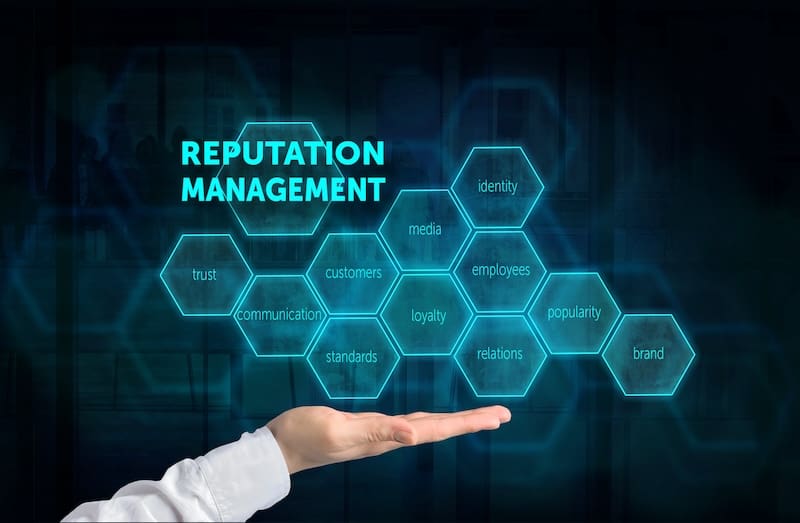
Maintaining your online reputation is essential for individuals and professionals to uphold trust and credibility in digital spheres.
The reputation management industry plays a vital role in controlling and shaping how you are perceived online. In the fast-paced world of the internet, information spreads quickly, making it crucial to proactively manage your personal or professional reputation.
By addressing and removing negative content, such as PlainSite court records, from Google search results, you can significantly enhance your online standing. This process involves strategic techniques and tools to monitor online mentions and feedback, enabling you to present yourself positively to potential employers, clients, and collaborators.
If your PlainSite court records are appearing in Google search results, then online reputation management is more important than ever before. Get started with a free analysis here or explore our services here.
How To Remove Plainsite Court Records

Removing your PlainSite records can be done by directly contacting the platform or utilizing third-party services specializing in data removal.
Contact Plainsite To Remove Information Collected
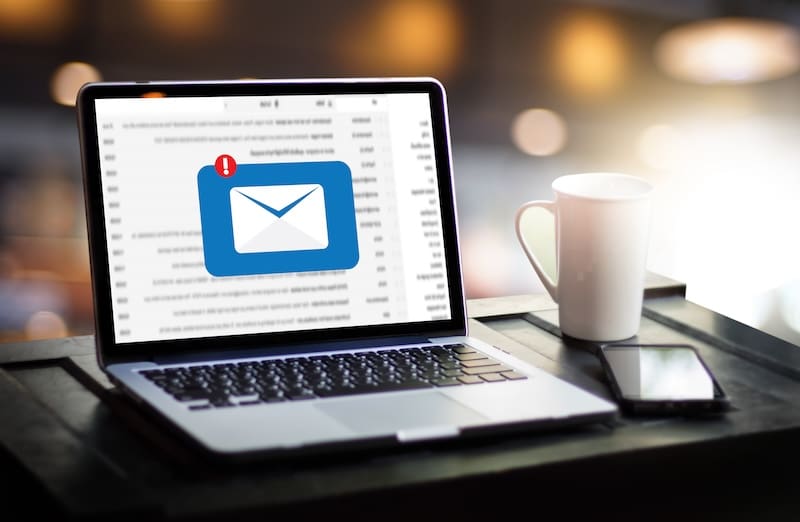
Directly reaching out to PlainSite for the removal of court records is a proactive approach to safeguarding your information.
If you are concerned about your personal data being displayed on the PlainSite platform, you can initiate the data removal process by sending a formal request directly to their team. You’ll find the contact form here.
It is crucial to provide accurate details when filling out the request form. Include specific URLs of the data you wish to have removed. Be sure to outline valid reasons for your request, such as privacy concerns or outdated information. Submitting a well-documented and polite removal request increases the chances of a prompt response from the PlainSite staff.
Use a Third-Party Service

Hire a third-party service specializing in court records data removal and search engine suppression. This will streamline the process of eliminating court cases and other data contained on platforms like PlainSite.
These reputation management advisors bring a wealth of expertise to the table, ensuring that your personal or professional reputation emerges unscathed.
By navigating the complexities of online platforms and search results, they can bury negative content and remove court records by promoting positive, authoritative information. This proactive approach not only safeguards your image but also saves you valuable time and effort.
Our specialists have in-depth knowledge of privacy laws and removal procedures. We’ll effectively clean up your digital footprint and enhance your online presence. Call us at 844-230-3803 to learn more.
What PlainSite Information Can You Remove?
You can remove a range of data from PlainSite, including personal details, court records, and professional information that may impact your digital presence or affect job prospects.
Personal Information

Removing personal information and court records from PlainSite can involve eliminating outdated court records, links, and other details that might compromise your privacy.
Removing obsolete court records and links from platforms like PlainSite can help enhance your online privacy and prevent potential threats such as identity theft or cyberstalking. It is essential to stay vigilant and proactively protect your digital identity. Stay informed about the information and court records that are publicly available about you.
Court Records
Deleting your old court records from PlainSite is crucial to protect your digital footprint and search results.
When you take steps to remove court records and cases from platforms like PlainSite, you safeguard your online reputation from potentially damaging information.
By eliminating court records from Google search results, you control the information others can find out about you. This process can have a direct impact on not only the first impression others have of you but also on the opportunities available to you professionally and personally.
Professional Information

Eliminating professional details from platforms like PlainSite can protect the reputation of legal entities, law firms, and other professional agencies.
In today’s digital age, maintaining a pristine online presence is crucial for the success and credibility of businesses operating in the legal sector. Law firms and professional agencies rely heavily on their online image to attract clients and establish trust.
By removing sensitive information from public databases, you can prevent potential harm to your reputation and credibility. This proactive approach not only shields you from unwanted scrutiny but also helps in upholding the confidentiality of client data.
Along with our parent company NetReputation, OnlineReputation.com provides information and services to help you remove court records and records pertaining to the public interest from search results. Get started with a free online reputation analysis here.
Alternative Options
Apart from PlainSite removal, individuals can explore alternatives like opting out of public record collection, adopting pseudonyms, or adjusting privacy settings on social media to protect their digital presence.
Opting out of public records databases involves taking proactive steps to remove one’s personal information from publicly accessible directories. This reduces the chances of it being misused or exploited.
Similarly, creating a pseudonym offers a layer of anonymity when engaging online, safeguarding your real identity from threats.
Leveraging advanced privacy settings on social media platforms can restrict the visibility of personal information. You’ll control who can view posts, photos, and contact details.
Public Records Opt-Out
Opting out of public records services can offer added control over the dissemination of personal information and links associated with one’s online profile.
By choosing to opt out of these sites and services, individuals have the opportunity to manage the visibility of their information more effectively. This proactive approach can prevent sensitive data from being easily accessible to the public.
Controlling the links connected to sites in your name ensures that only the information you want to be available is visible online. In a world where online privacy is increasingly important, taking control of your digital footprint through these actions is crucial.
Pseudonyms

Adopting a pseudonym can provide a layer of anonymity and a way to separate personal and professional online identities. By utilizing a pseudonym, individuals can navigate the digital realm with a sense of security and confidence. Moreover, creating an alter ego allows users to engage in online interactions without the fear of their true identity being exposed.
This separation also proves advantageous in managing one’s reputation, as it permits individuals to express diverse opinions or partake in varied activities without impacting their real-life persona.
Utilizing pseudonyms offers a shield of privacy, granting users the discretion to control the narratives associated with their alternate identities.
Social Media Settings
Leveraging privacy settings on social media platforms is a proactive privacy step. You’ll control the visibility of personal information and manage data-sharing.
Choose who can view your posts, photos, and other shared content. By adjusting these settings, you prevent personal data from being accessed by unauthorized users.
Regulating privacy settings on social media sites can prevent potential privacy breaches and protect individuals from falling victim to online scams or identity theft, too. Users can customize their privacy preferences to strike a balance between staying connected with friends and family while ensuring their sensitive information remains secure.
Protect Your Privacy Online

Ensuring privacy online involves search engines, search results, and data security.
One of the key strategies to enhance online privacy is to regularly review and update privacy settings on various platforms and devices that collect personal data. Manage permissions and limit the information shared. You’ll reduce your digital footprint and minimize exposure to potential risks.
Utilizing virtual private networks (VPNs) can add an extra layer of security, too. VPNs encrypt internet traffic and mask IP addresses. This enhances anonymity and confidentiality. It also prevents third parties, including search engines, from tracking online activities.
Mindful Sharing
Being cautious about what you share online prevents inadvertent data exposure.
We all post personal information online — photos, updates, location details. Remember that once data is shared on a website, it’s out there in the digital world.
To safeguard your privacy, evaluate the necessity of the content you disclose. By being mindful of the information you share, you can significantly reduce the risk of unauthorized access or misuse.
Also, get into the habit of reviewing privacy settings, terms of use, and permissions on web sites. This will further fortify your online data protection.
Remember, every uploaded post or comment contributes to your digital footprint. Everything you do online shapes your digital presence and vulnerability to cyber threats.
Strong Passwords
Use strong passwords for online accounts and services to add extra security. You’ll better protect sensitive information and prevent unauthorized access to personal data.
When creating a password, avoid common phrases or easily guessable combinations. Instead, opt for a random mix of uppercase and lowercase letters, numbers, and special characters. This will make it more challenging for cybercriminals to crack.
Furthermore, change your passwords regularly. You’ll lessen the risk of potential breaches through stolen or compromised credentials.
Google Search Results
Consistently monitoring your online presence enables users to stay vigilant against potential threats to their reputation and personal data security.
By regularly checking your digital footprint, you can swiftly address any misinformation or harmful content that could tarnish your reputation. Actively monitoring online activities helps in safeguarding sensitive information from cyber breaches and identity theft.
You’ll also take control of your digital narrative. Through maintaining awareness and promptly addressing any suspicious activity, individuals can significantly reduce the risks associated with online privacy breaches.
Frequently Asked Questions
What is PlainSite removal?
PlainSite removal is the process of removing court records from the PlainSite website. This protects your privacy online. PlainSite displays personal information, including addresses and financial records. The site may also have additional credit-related data, student loan debt information, and more. This leaves you vulnerable to cyber crimes.
How does PlainSite removal work?
PlainSite removal works by submitting a request to the website to remove your personal information. This request must include proof of your identity and a valid reason for the removal. Once approved, the website may remove your information within a certain time frame.
What personal information does PlainSite display?
PlainSite displays a wide range of personal information. This includes court documents, property records and business licenses. Social Security numbers and financial records may also be displayed.
Is PlainSite removal a guaranteed privacy solution?
PlainSite removal can greatly reduce the amount of personal information available on the website. However, it’s not a guaranteed solution. Some information may still be accessible through other sources. Regularly monitor your online presence and take precautions to protect your privacy.
Can I request PlainSite removal for someone else?
No, removal from PlainSite can only be requested for your personal information. If you’re concerned about someone else’s information being displayed on the website, provide them with the necessary information to request removal.
How often should I check for my information on PlainSite?
Check for your personal information on PlainSite at least once a year. If you have recently had a major life event, check for updates on the website.
Take the First Step: Preventing Frequent Public Access to Your Information
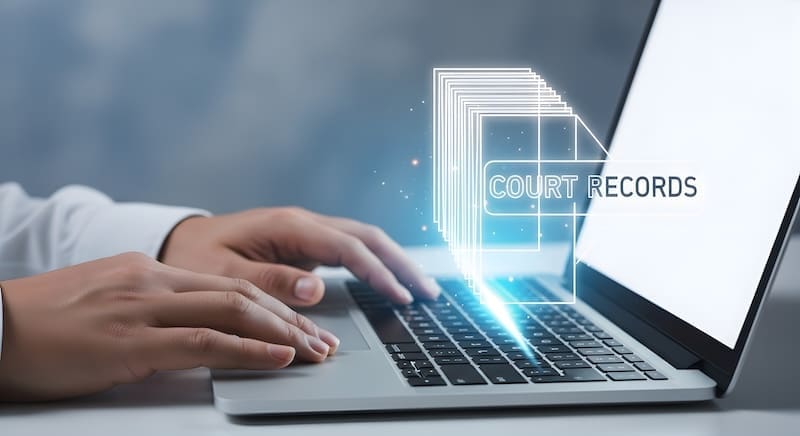
Strategic data control can safeguard your personal data and manage your online reputation.
By ensuring that collected data is not easily accessible to the public, individuals can better protect their data and maintain a positive reputation. You’ll also reduce the risk of identity theft, online harassment, and other privacy breaches.
Controlling what information is available online is crucial in today’s digital age. Personal details can easily be misused or misconstrued. By being proactive, individuals can shape how they are perceived and prevent any misinformation from damaging their reputation.
Opting for a third-party service for assistance, including removing PlainSite records and search engine suppression, can streamline the process. These service providers often have the expertise and tools to efficiently handle removal requests on your behalf.
Whether you’re prioritizing your personal or professional online reputation, our advice and team of experts can help. Call us at 844-230-3803 to learn more.
You might also like
Why Influencers Are Turning to Reputation Management After Algorithm Changes
Protecting your privacy online has never been more important. One way to safeguard your personal information is by removing old …

